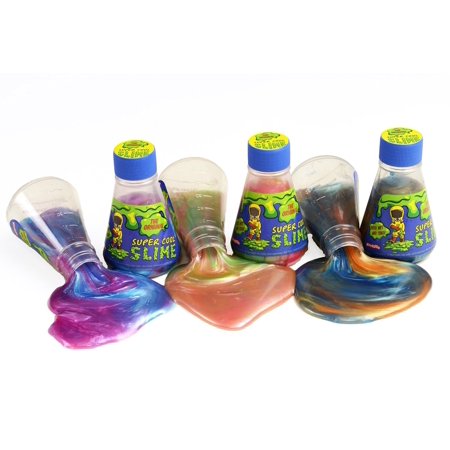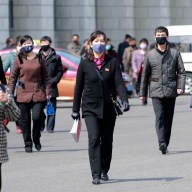The holiday shopping season is in full swing, but dangerous toys like toxic slime and privacy-invading tech could pose a risk to your children, according to the watchdog group U.S. PIRG.
U.S. Public Interest Research Group Education Fund (PIRG) recently released its 33rd annual Trouble in Toyland report, which identifies dangerous toys available during the holiday shopping season.
The 2018 report on holiday toys found dangers such as toxic amounts of boron — which can cause nausea, “persistent vomiting,” diarrhea and other gastrointestinal health issues, according to the Agency for Toxic Substances and Disease Registry — and choking hazards that were not properly labeled.
“No one should worry about whether or not the toy they’re buying is toxic or dangerous. But in 2018, we’re still finding hazards in some of the most popular toys,” said Adam Garber, consumer watchdog for U.S. PIRG, in a statement. “Toy manufacturers must do better to ensure their products are safe before they end up in children’s hands and mouths.”
2018 Holiday gifts: U.S. PIRG says to avoid these dangerous toys
The U.S. PIRG report’s potentially dangerous toys include:
Slime
U.S. PIRG found six kinds of slime with toxic levels of boron, likely from borax, which is an ingredient listed in many slime kits as an “activator.” Along with nausea and vomiting, borax can cause irritation to skin and eyes and hormone disruption, leading to reproductive health issues.
In July 2016, the Canadian government advised residents to avoid using boric acid (a.k.a. boron or borax) in children’s arts and crafts, such as slime. The European Union has a limit on boron concentrations greater than 300 parts per million.
U.S. PIRG found slime toys with boron concentrations as high as 4,700 parts per million. The United States has not established a limit on boron concentrations in children’s toys.

Balloons, Hatchimals, L.O.L. Surprise toys for choking hazards
Balloons are responsible for more suffocation deaths in children than any other product, according to U.S. PIRG, and yet 87 percent of the latex balloons the group surveyed on Amazon “lacked the legally required warning indicating that the toy presents a choking hazard for children under 8,” the report reads.
Other holiday toys that contain small parts lacked the necessary warning labels, as well. Hatchimals Fabula Forest lacked a choking hazard label on its Walmart.com listing, yet the product’s packaging has a choking warning.
Certain L.O.L. Surprise toys (like “Bundle of LOL Surprise! Pearl Surprise Turquoise and Purple Styles” or “L.O.L. Surprise! Pets Series 4”) have no choking hazard label on their Amazon listing, U.S. PIRG found, “seemingly in violation of the labeling requirements and Amazon’s guidelines.” The product packaging for those toys also contained a choking hazard label.
Internet-connected smart toys
For a different category of dangerous toys, U.S. PIRG is warning parents about smart devices that connect to the internet, which could pose a risk to your child’s privacy.
U.S. PIRG points to findings from the Mozilla Foundation found that two toys, the Amazon Fire HD Kids Edition and the Dash robot made by Wonder Workshop, did not meet the foundation’s minimum privacy and security standards.
These companies both deny that their devices share information with third parties, however.
Wonder Workshop CEO Vikas Gupta told CNN that U.S. PIRG’s dangerous toy warning for their robot was “absolutely incorrect.”
“We don’t collect any personal identifiable information from children,” Gupta said, “and we do not share any information from the apps or the software or robots to any third-party ever. None of that happens.”
Amazon also said in a statement that it does not share children’s data with third parties.
For more information on dangerous toys from U.S. PIRG, see the Trouble in Toyland report at uspirg.org/feature/usp/trouble-in-toyland.













